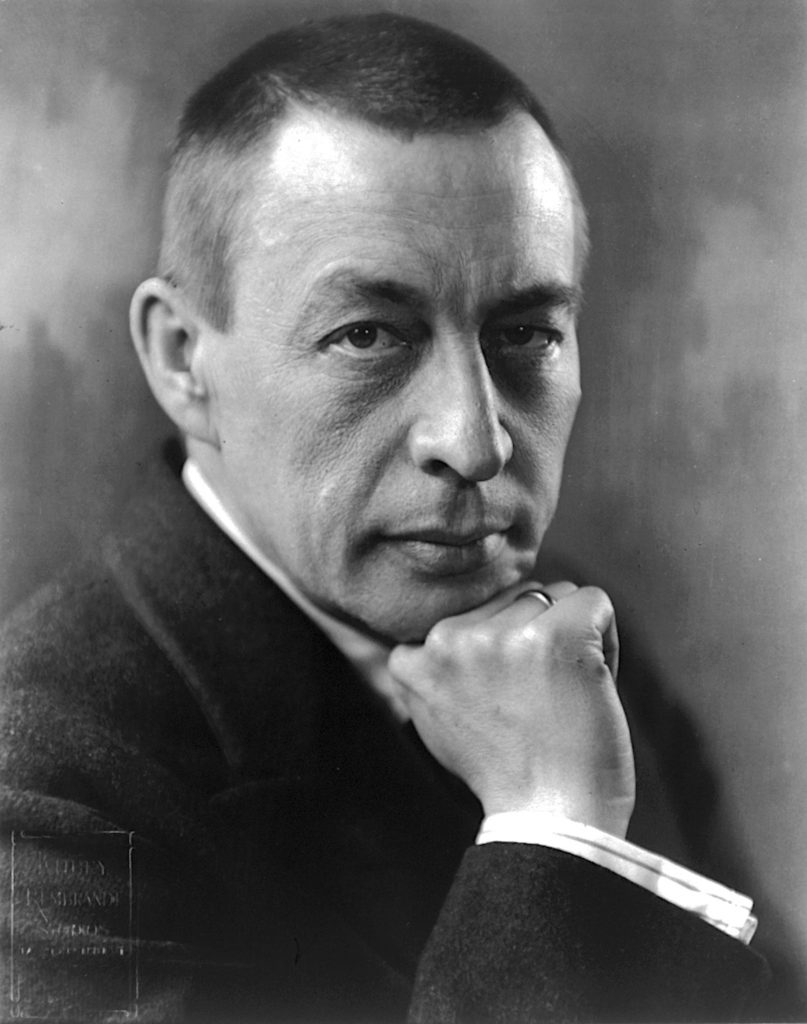If you are a serious concertgoer, you’re probably familiar with Rachmaninoff’s instrumental works. In 2023, several of them blazed through the world’s concert stages, in fact, as part of the composer’s 150th birthday celebration: works such as the Second and Third Piano Concertos, the Paganini Rhapsody, the symphonies, the Cello Sonata, and the solo piano music.
But any big-picture overview of Rachmaninoff’s works would be remiss to leave out the choral and vocal works, which present a whole different side of the Russian-born composer—one that is in many ways more personal and intimate, and in the case of the sacred works, deeply religious.
During the 2025-2026 season, Kansas City audiences have a chance to hear music from both spheres: In addition to two concertos and a symphony, three out of four of Rachmaninoff’s major choral works will help round out our view of this essential Russian-American. This October 31st through November 2nd, the Kansas City Symphony and Chorus and world-renowned soloists will present the The Bells, Rachmaninoff’s “choral symphony” on Edgar Allan Poe’s poem. In September, Te Deum presented a rare performance of the a cappella All-Night Vigil. And this spring, on April 11th and 12th, the Symphony and Chorus will also perform Rachmaninoff’s cantata Spring, with baritone Evan Hughes.
The Symphony’s October-November program is in fact the first of two Rachmaninoff Celebration concerts this season: It also includes the Second Piano Concerto with soloist George Li. Later in the season (June 5-7) the Celebration continues with a program of the Third Piano Concerto (with soloist Yefim Bronfman) and the Third Symphony, led by Music Director Matthias Pintscher.

These concerts also include commissioned world premieres of Rachmaninoff-inspired solo piano works: by Nico Muhly, Nicholas Britell, and Olga Neuwirth—and even one by Matthias himself.
Rachmaninoff’s major choral works date from his early maturity in Russia: three of the four were composed shortly before he fled the Revolution in 1917, never to return to his homeland: the Liturgy of St. John Chrysostom (1910); The Bells (1913), and the All-Night Vigil (1915). Rachmaninoff left Russia heartbroken and with almost nothing in his pockets, eventually becoming a United States citizen in 1943.
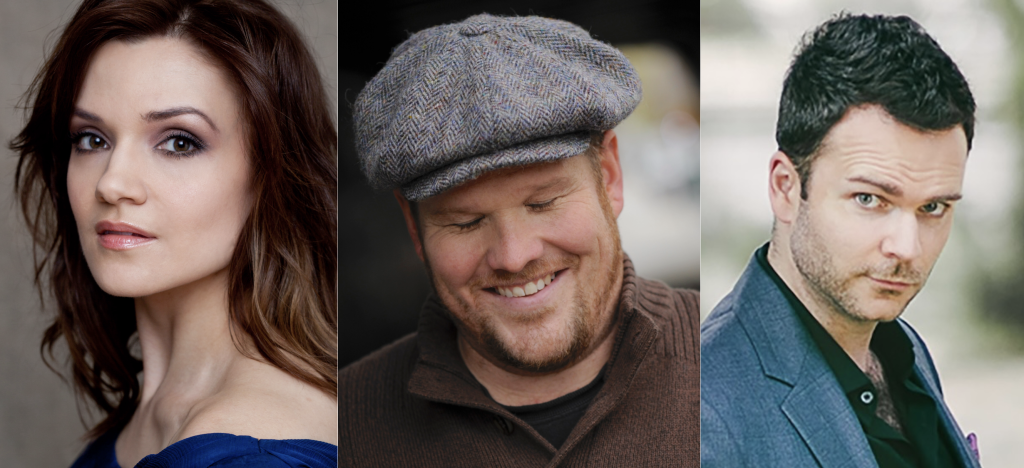
The Liturgy and the Vigil have received a flurry of excellent recordings in recent years, which together with increasingly common live performances have helped them gain favor. The late American musicologist Miloš Velomirović has called them “the highest artistic achievements in the realm of Russian church music.”
The Kansas City Chorale and its “sister choir” in Phoenix, led by Charles Bruffy, won the 2016 Grammy Award for Best Choral Performance for their Chandos CD of the All-Night Vigil, which was sung in Russian and acclaimed the world over. And as far back as 1996, the Chorale recorded the Liturgy of St. John Chrysostom, also in Russian, on a disc that the late Sarah Bryan Miller (writing in the St. Louis Post-Dispatch) called “a beautifully realized performance.”
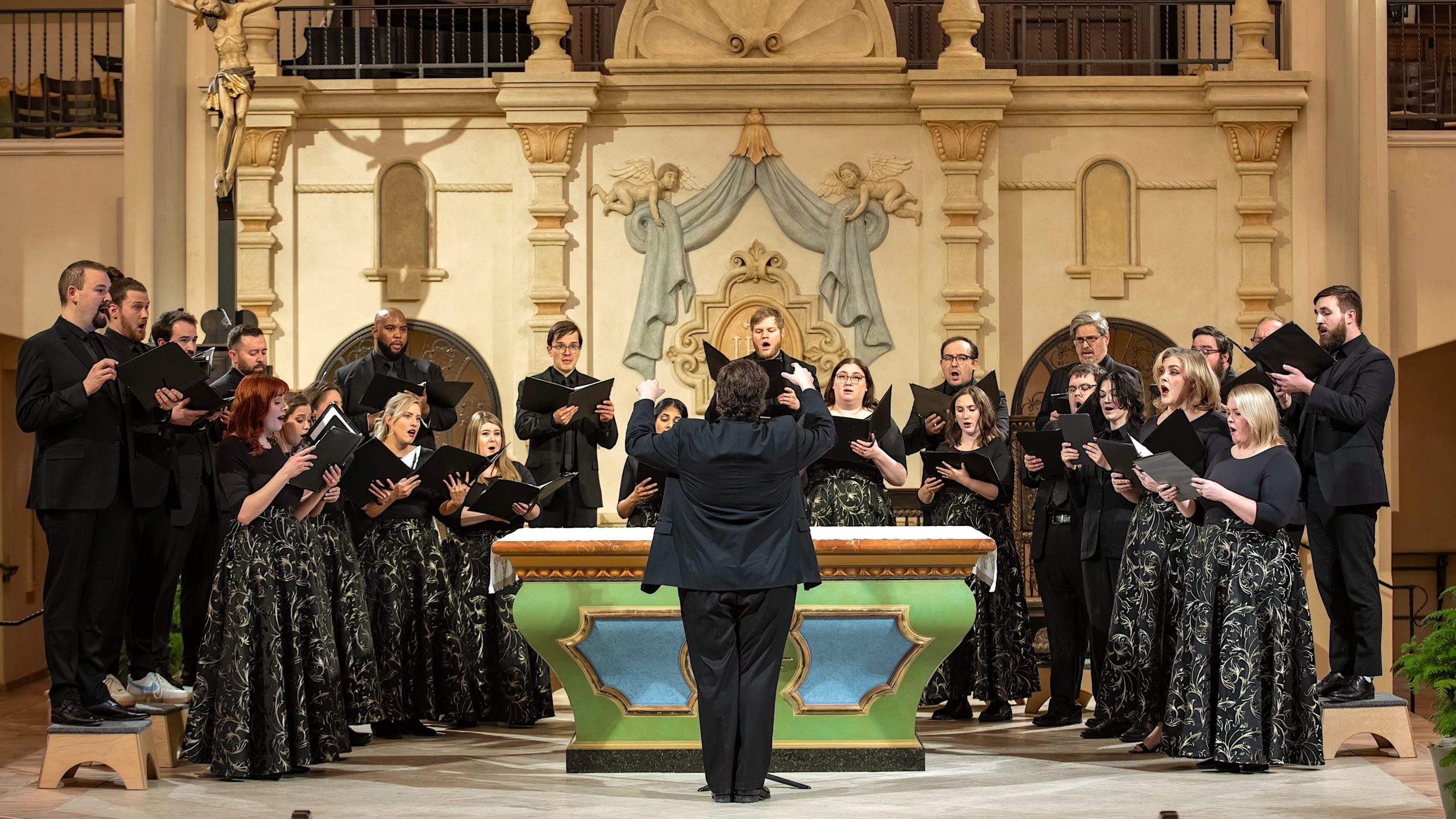
Even removed from their ecclesiastical setting, these works from Rachmaninoff’s creative prime are chillingly gorgeous. Yet live performances of the Liturgy remain rare: Like the Vigil, it uses texts from Church Slavonic, presenting a daunting, though not insuperable, challenge to non-Russians.
It is hardly surprising that Te Deum has also taken the All-Night Vigil into its repertoire: Since its founding in 2008 by director Matthew Christopher Shepard, this 26-voice choir has rapidly emerged as a major player in Kansas City’s burgeoning choral scene. “The choral works show Rachmaninoff’s deepest spiritual side,” Matthew said. “In the Vigil, we’re not just hearing the virtuoso pianist or the Romantic symphonist, but the Orthodox believer.”
A neglected 20th-century ‘symphony’
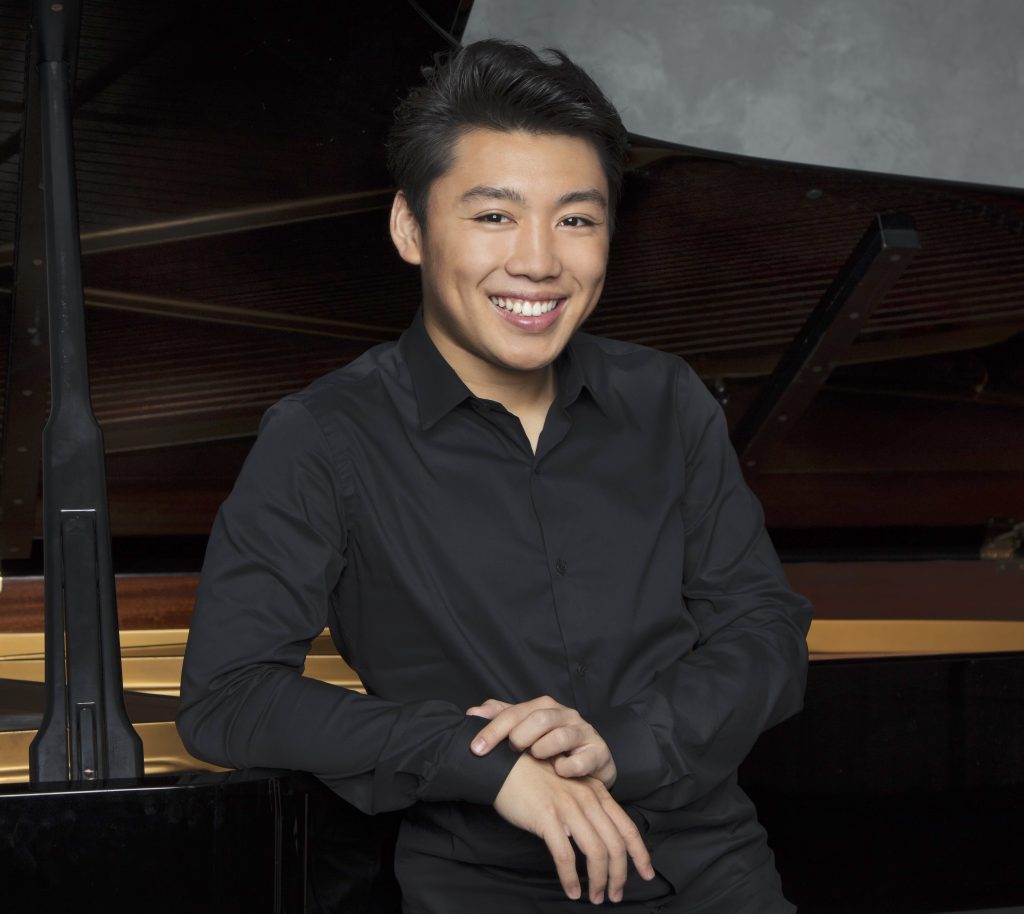
The Bells was set in Russian, though the Symphony will sing it in an English translation that the composer authorized in 1920. (The syllabic “scan” of Balmont’s translation is a considerable distance from Poe’s, and thus one cannot simply return to the original poem to sing the symphony in English.) It is an entirely different type of choral work, having emerged as a sort of hybrid of two initially distinct ideas. While sketching out a four-movement symphony, Rachmaninoff decided to fuse it with his parallel project to set Konstantin Balmont’s freewheeling Russian translation of Poe’s verse.
The symphony is structured like the poem: Each movement deals with a different type of bell and its significance, from the joy of life and nuptial bliss (the first two movements) to fear and death (the third and fourth). It stands easily as one of the great symphonies of the late-Romantic period.
“The Bells was Rachmaninoff’s favorite composition,” said Charles, who has long advocated for masterpieces of Russian music. Though he acknowledged that we live in problematic times with respect to Russian culture, he emphasized that Rachmaninoff’s output exists beyond politics and that it “includes compositions in multiple genres that deserve attention.”
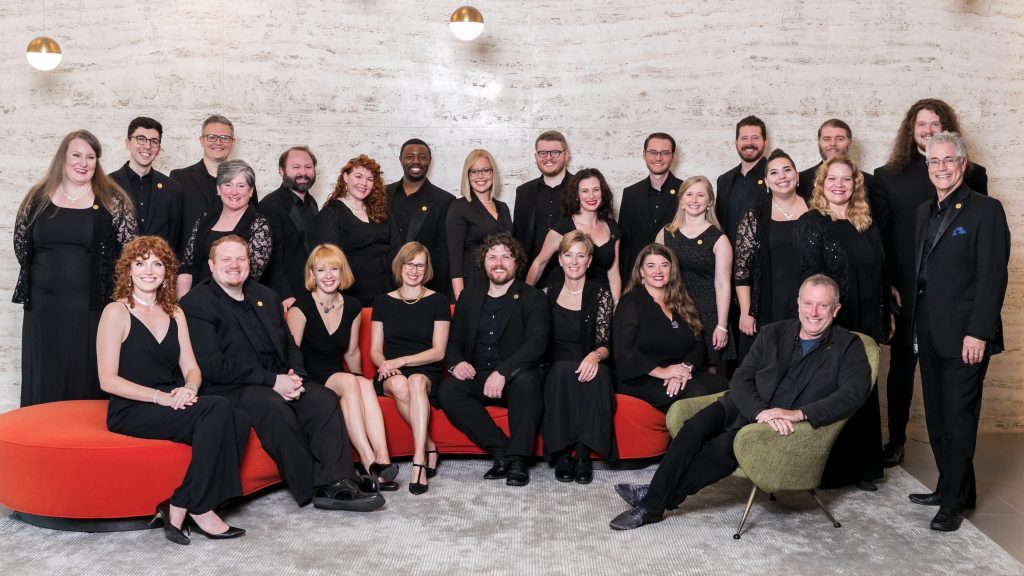
Rachmaninoff’s lifelong fascination with the sound of bells is connected, in part, to the important historical roles that bells have played in Russian life: from bells that call to worship to those that sound alarm.
Thus while nearly all of us can give in to Rachmaninoff’s sweeping melodies, “the context … of these melodies, and the basis of his artistic creation, comes from a Russian heritage,” said George Li, this month’s soloist with the Symphony, who blazed to international fame in 2015 when he won the Silver Medal at the International Tchaikovsky Competition.
“There’s always an element of the Russian bells within his music—the first several bars of the Second Concerto, for example,” George added. “And there is constant nostalgic quality in his music, which I think is associated with his yearning to go back to his homeland.”
True to his own voice
Rachmaninoff has come to represent the best of 20th-century music—despite earlier criticisms of his music as “too Romantic.” He lived in a musical world in which modernism was beginning to rule, at least in academic circles, yet he remained true to his own voice.
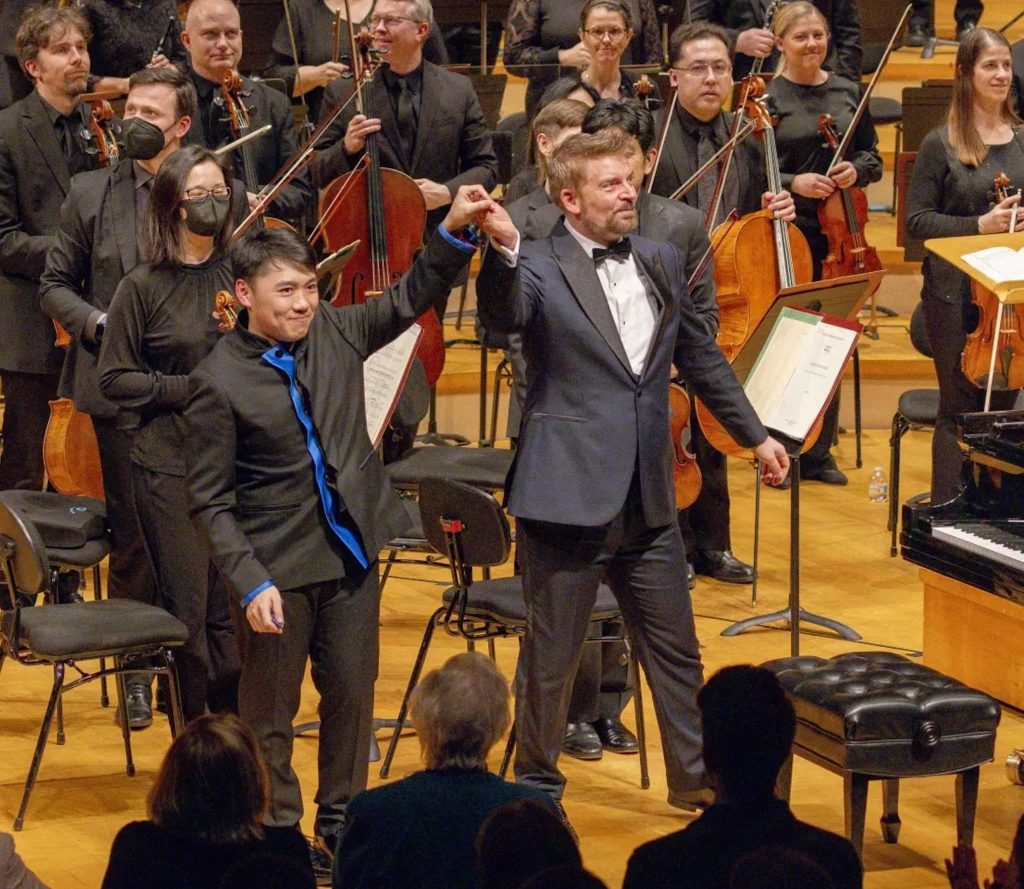
Today we find it refreshing that a composer was “able to find something unique to say, with the harmonic and structural language that had been used by so many composers before him,” George said. “Rachmaninoff’s concertos are so symphonic in nature, and I always find playing these concertos, along with those of Brahms, the closest to the feeling of conducting a large symphony by Tchaikovsky or Mahler. It’s amazing how much energy and momentum Rachmaninoff is able to generate, through building up waves of gorgeous melodies and textures. … When done right, the catharsis is something amazing to experience.”
The choral music is capable of bringing its own sort of catharsis. It was long believed that Rachmaninoff’s relationship to faith was tenuous, but when hearing his vocal music one has a different impression altogether. He grew fond of ancient church music (and of bells) already as a boy, when he attended Orthodox services with his grandmother. Alexander Goedicke, a composer friend from Rachmaninoff’s final Moscow years, wrote that “he loved church singing, and often, even in winter, rose at seven and went by cab to the early liturgy at Andronikov Monastery—hearing the old chants sung by the monks.”
Rachmaninoff kept his religion to himself but used choral music to express its fervent importance. “People used to claim Rachmaninoff was not a man of faith, but that has been disproven,” Matthew said. “It’s now understood that his faith was private, but devout. In the All-Night Vigil, you feel that devotion. The writing is still brilliant, but it is approached with humility and reverence. It feels personal, almost like a confession.”
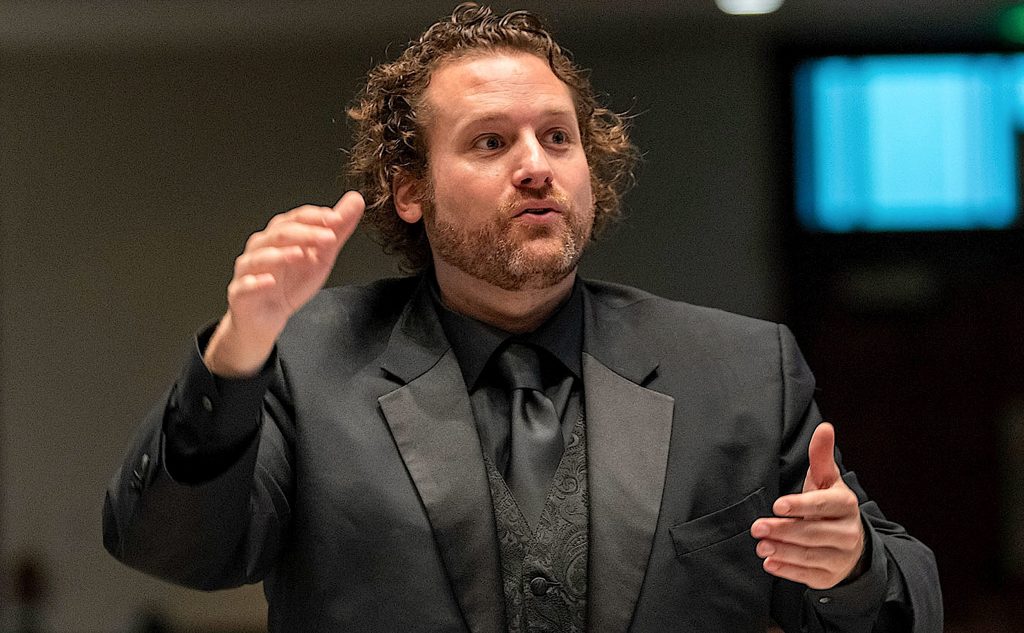
Above all, Rachmaninoff’s music transcends nations and politics. “Because the Vigil is built on Orthodox chant, I’d call his voice profoundly Russian,” Matthew said. “At the same time, the emotion in his music reaches far beyond Russia. He takes a distinctly Russian language, both musical and textual, and makes it universal. Emotions, after all, are universal. That’s why audiences across the world can feel like he’s speaking directly to them.”
These works are a reminder of the unifying potential of music. “You hear a culture where joy and sorrow are intertwined,” Matthew said. “There’s both lament and hope, strength and tenderness. In his music I hear a people who endure, who share a communal faith, and who believe beauty itself can be both a form of survival and resistance.”
—By Paul Horsley
The Symphony’s performance of The Bells (October 31st through November 2nd) includes soprano Andriana Chuchman, tenor Garrett Sorenson, and baritone Joshua Hopkins. The Second Piano Concerto features George Li as soloist. For tickets call 816-471-0400 or go to kcsymphony.org. Also see te-deum.org and kcchorale.org. To reach Paul Horsley, performing arts editor, send an email to paul@kcindependent.com or find him on Facebook (paul.horsley.501) or X/Instagram (@phorsleycritic).
